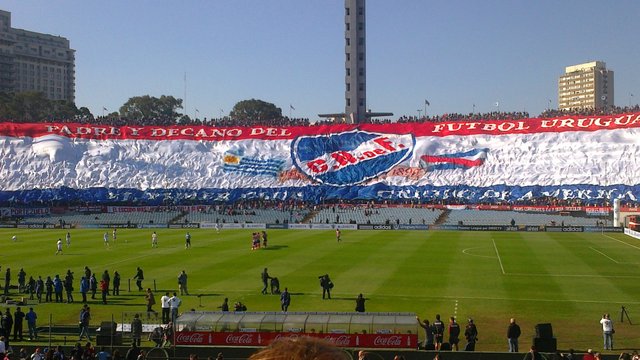The first fan
Football is attractive mainly because of what happens on the field, but also the stands attract the objectives of the cameras. And it is that the fans with their colors and flags, with the breath and the songs they dedicate to their teams represent a true spectacle.
But it was not always like this. As we know soccer was born in England and with time it was expanding for the rest of the world, mainly for Europe and South America. In South America, the first countries to adopt it were Uruguay, Argentina and Brazil. Since the early twentieth century football experienced an accelerated popularization in this region. The National Football Club of Montevideo, Uruguay, is one of the first founded in South America. Its stadium, El Gran Parque Central, was the first to be built in America and was also the one that sheltered the first fan or hincha, as it is said in Uruguay and Argentina.
In those first years, the public that attended the stadiums to see their favorite team behaved in a very different way to what is customary to see today. The supporters used to be dressed in suits and ties, they remained seated in their location throughout the meeting and limited themselves to applauding in case there was a goal.
But in the stadium of the National Club of Montevideo the spectators, from the stands, in addition to seeing the match, they saw an individual who showed a strange behavior. This man watched the game from the side of the court, but far from sitting and silent, he spent the whole meeting standing, jumping sometimes, haranguing the players screaming and maybe even rehearsing some singing. The strangest thing happened when his team converted a goal, then his celebration was the most crazy thing anyone could have ever seen: jumping arms up to the sky, shouting "Goool, goool, vamo Nacional, vamo Nacional nomá" and running he threw on the technician or someone else who was nearby and pressed him against himself in an embrace obviously uncomfortable for his victim.
He was Prudencio Miguel Reyes, the club's prop. Among his tasks was to inflate the balls when they were short of breath. In Uruguay this process of inflating a ball was then told "hinchar la pelota" (puff up the ball). So when they saw Reyes behave in such a way they said to each other with some annoyance: "look at that hincha pelotas". Here we have the origin of a first attribution of the term that has been given and has subsisted in River Plate speech: hincha pelotas fan balls (or in its reduced version: hincha) is someone who is annoying, someone unbearable.
But with time and as the public of National was accustomed to see Reyes behave in that way, the annoyance that caused them at the beginning was transmuted into tolerance, then into acceptance and later into admiration. And they saw how their attitude seemed to breathe encouragement to the team. In effect, Reyes was not only the one who gave air to the balls but also the one who gave air (breath) to the players. Then give breath (in spanish: alentar) becomes synonymous with harangue. And at the same time a second meaning of the term hincha was born, much more benevolent than the first, the hincha now is also that sympathizer who encourages his team. Finally, by derivation, the group of hinchas becomes known as hinchada.
Unfortunately, in football, along with the fan or genuine supporter who supports with songs, colors and celebrations to his team, have appeared in many cases the so-called barrabravas, that is to say, individuals that making use of violence (verbal and physical) in instead of encouraging their team they attack the opposing team, the referee and anyone who for one reason or another they consider an enemy.
